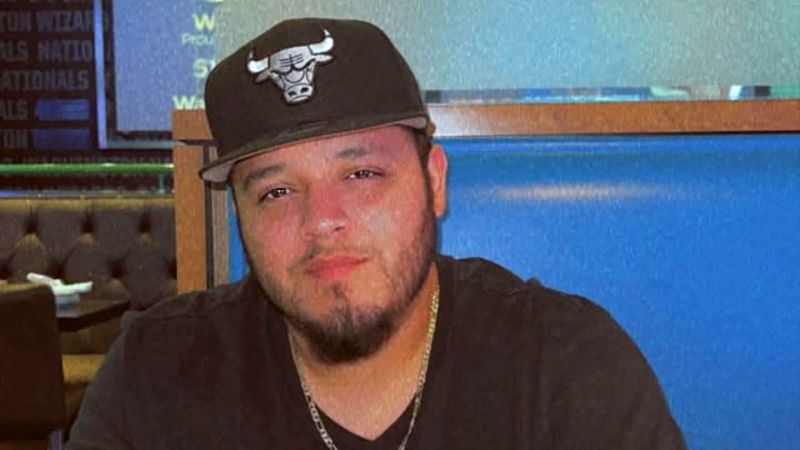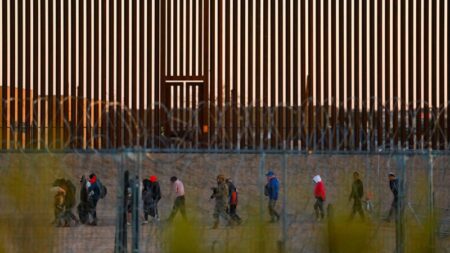The legal saga surrounding Kilmar Abrego Garcia continues to unfold as his attorneys take significant steps to keep their civil case against the Trump administration vigorous and active. On a Wednesday in October, they filed a motion to amend their lawsuit, which they argue should include the allegations of “torture and mistreatment” that Garcia suffered at the infamous Center for Terrorism Confinement (CTC) in El Salvador, where he found himself wrongfully deported and detained earlier this year. His legal team is striving for accountability and relief concerning the horrific conditions he faced during his imprisonment.
In court documents submitted to a federal court in Maryland, Garcia’s representatives assert that once in the custody of Salvadoran authorities, he was subjected to inhumane treatment and intolerable conditions. They allege that he experienced severe physical and psychological torture upon his arrival at CTC. The details provided by his attorneys include harrowing accounts of severe beatings, forced sleep deprivation, inadequate nutrition, and psychological torment—a grim portrayal that seeks to highlight the very real and human suffering often hidden behind political narratives.
Upon entering the prison, Garcia allegedly underwent a humiliating intake process, wherein his head was shaved, and he faced physical violence that left him marked with visible bruises and lumps all over his body. This treatment continued as he, along with 20 others, was coerced into kneeling overnight, with prison guards meting out punishment to anyone who fell. The draining ordeal led to Garcia being denied bathroom access, resulting in further humiliation as he soiled himself. These disturbing details paint a vivid picture of the brutal reality that he faced at CTC.
His attorneys describe the cell where he was initially held as a dismal and overcrowded space devoid of windows, equipped with metal bunks lacking mattresses, and illuminated by glaring lights that remained on continuously. Such unsanitary and inhumane conditions were further compounded by claims that, at one point, Garcia and some fellow detainees were temporarily transferred to an area of the prison that had mattresses and better food. This, they allege, appeared to be a calculated effort to present a facade of improved conditions for the purposes of documentation.
Garcia supposedly spent nearly a month at the notorious mega prison. During the initial two weeks of his confinement, his lawyers assert that he lost an alarming 31 pounds. As the case has developed, it intersects with broader immigration debates, particularly as the Justice Department has sought to label the case moot due to Garcia’s return to the U.S. to confront human smuggling charges. Nonetheless, his attorneys contend that it is crucial to include his experiences in prison as they offer a comprehensive insight into the alleged violations that demand remedial action.
The Department of Homeland Security (DHS) has not remained silent either. Responding to the lawsuit, DHS spokesperson Tricia McLaughlin dismissed claims of mistreatment as a mere “sob story” aimed at winning sympathy from the media. She argued that the portrayal of Garcia as a victim is misleading, characterizing him instead as a “criminal illegal gang member.” However, Garcia’s family and legal team staunchly refute this assertion.
As the controversy deepens, Garcia’s case has drawn significant attention, emerging as a political flashpoint amid criticisms of the Trump administration’s strict immigration policies. His wrongful deportation sheds light on the complexities and potential failures within immigration enforcement processes. Currently, Garcia remains in federal custody in Tennessee while facing human smuggling charges, and the government has expressed intentions to eventually deport him—although not back to El Salvador, his native country.
Compounding these multifaceted legal issues, the recent filing from Garcia’s attorneys sought to incorporate information regarding a whistleblower letter from a former Justice Department lawyer, Erez Reuveni. This letter allegedly outlined attempts from high-level DOJ officials to mislead judges concerning Garcia’s case. As the proceedings unfold, Garcia finds himself in a precarious position, navigating a complex legal landscape that might dictate his future.
His current status remains uncertain. Despite being under the custody of U.S. Marshals, Garcia is in limbo regarding what his next legal step might entail. With mounting political and legal pressures, the situation encapsulates the contentious debates surrounding immigration policies in the United States, illustrating the human stories often lost in the procedural minutiae of the law.











